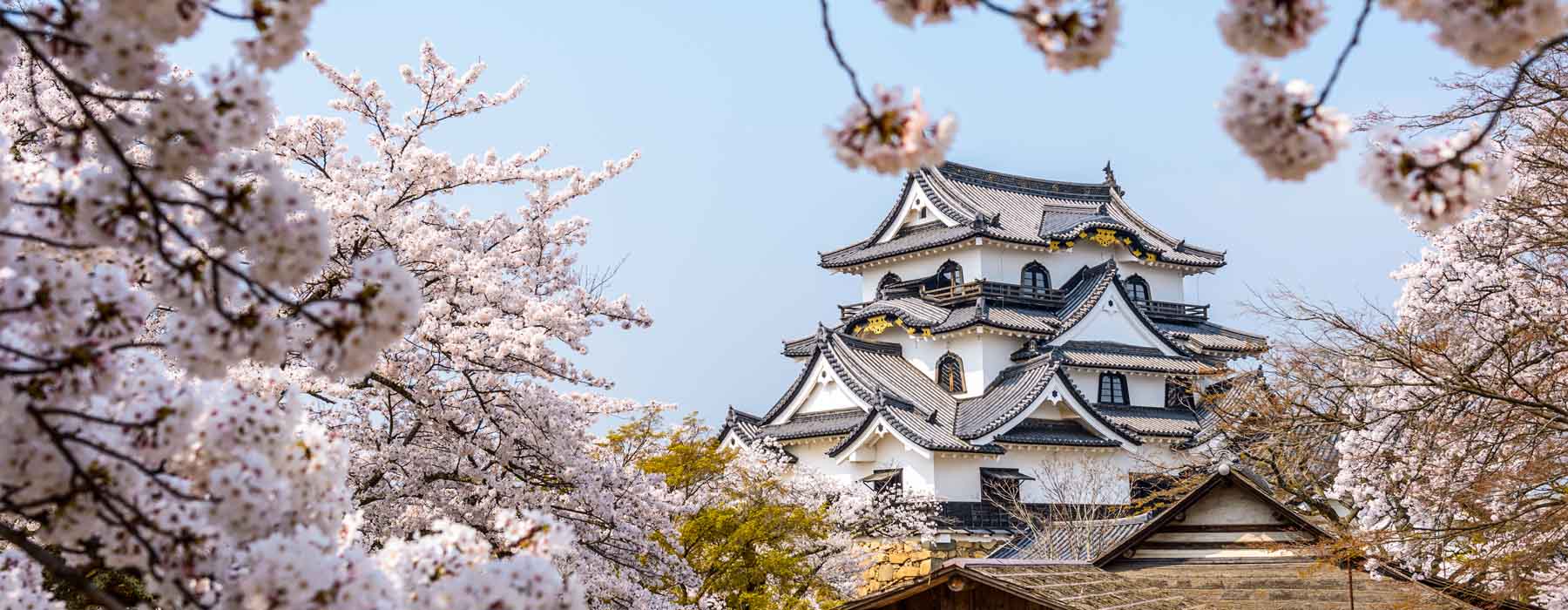January
February
March
April
May
June
July
August
September
October
November
December
Japan is an archipelago of islands nearly 2,000 miles in length and climatically influenced by the Pacific Ocean on its east coast and the Sea of Japan on its west coast. 'The Land of the Rising Sun', with its four main islands and more than 3,000 smaller islands, has an extremely diverse climate. Located in the northern hemisphere, Japan experiences both warm and cold currents that meet near its coastlines and greatly influence the weather. While the north of Japan has a subarctic climate, the south of the country has a subtropical and even tropical climate. Japan has four main seasons, of which both the length and intensity vary by region.
Seasons in Japan
Winter is longer and more severe in the north and lasts from November to April. The wind from eastern Siberia brings a cold, humid climate that is particularly biting in mountainous areas. The north-western part of Japan often experiences snowfall. The winters become shorter, and the summers longer, the further one travels south. Spring begins in Japan in early April for the southernmost regions, but sakura (cherry blossom) season typically begins in May in northern regions such as Hokkaido. The same applies to Autumn, which runs from September to October, or even to the end of November, depending on the region. What about summer in Japan? Summer falls between June and September throughout the archipelago, with peak temperatures in August. The first part of the summer, in June, is rainy, as is September. July and August comprise the hot season, with slightly less humidity.
Tokyo
Tokyo is located at the same latitude as Athens. The capital of Japan is located in an area with a humid and subtropical climate. In Tokyo, unlike in the north of the country, winters are mild and summers hot and very wet. The months of June and July are sometimes marked by storms and cyclones. Maximum average temperatures are highest in July and August at 29°C and 31°C, respectively. September is slightly milder with a maximum average temperature of 27°C, but there is higher rainfall, exceeding 7.8 inches, and generally ten to fifteen days of rain during the month.
Kyoto
Kyoto, located in a basin surrounded by the mountains, enjoys a microclimate, with very hot summers and very cold winters. In spring, between March and May, the weather is mild and rainfall is rare. This is when the Cherry Blossom Festival takes place, and hotel availability is at a premium. Then, between June and July the rainy season begins. As with the rest of inland East Asia, the rainfall starts to become very heavy. After this rainy period, in July and August, summer begins in Kyoto. Because of its location, Kyoto has very little wind, so the heat can become stifling. Storms may break during this period. Japan's spectacular autumn colours are best from September to November and then gently fade into winter, which runs from December to February. Kyoto is regularly affected by snow during the winter months.
Shikoku
Shikoku is one of Japan's four main islands. Shikoku, located between the Seto Inland Sea and the Pacific Ocean, is an island with a humid, subtropical climate. There is no snowfall in Shikoku during the winter, as the island has a relatively mild climate, while the summer is hot and humid. As in other parts of East Asia, the period between June and September is the typhoon season, with very heavy rainfall. The periods with the mildest temperatures in Shikoku are between March and May, as well as in October, after the rainy season.
Tohoku
Tohoku is the north-eastern region of the island of Honshu, Japan's main island. The area's climate is quite harsh, with very heavy snow and sea mists. The western part of the Tohoku region, with its massive mountain ranges, experiences very cold winters and a very short, stiflingly hot, summer season. In the east, the Pacific Ocean exerts its influence, and there is a huge amount of rainfall. In the Tohoku region, travellers looking for a drier, more continental, climate should go further inland.



